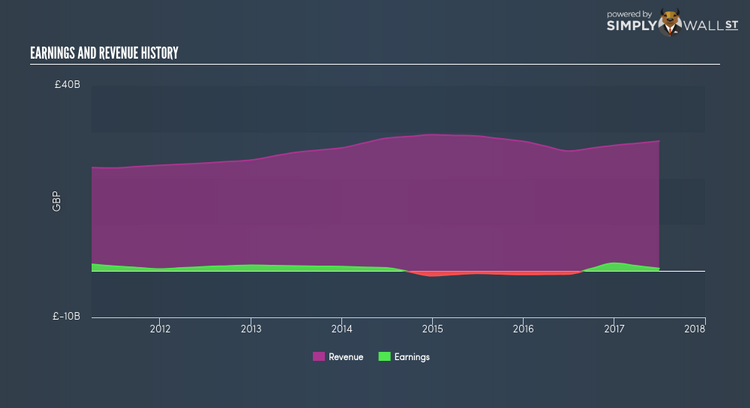Before You Buy Centrica plc’s (LON:CNA), You Should Consider This

If you are looking to invest in Centrica plc’s (LSE:CNA), or currently own the stock, then you need to understand its beta in order to understand how it can affect the risk of your portfolio. CNA is exposed to market-wide risk, which arises from investing in the stock market. This risk reflects changes in economic and political factors that affects all stocks, and is measured by its beta. Not all stocks are expose to the same level of market risk, and the market as a whole represents a beta of one. A stock with a beta greater than one is expected to exhibit higher volatility resulting from market-wide shocks compared to one with a beta below one.
See our latest analysis for Centrica
What is CNA’s market risk?
With a five-year beta of 0.38, Centrica appears to be a less volatile company compared to the rest of the market. This means that the change in CNA’s value, whether it goes up or down, will be of a smaller degree than the change in value of the entire stock market index. CNA’s beta indicates it is a stock that investors may find valuable if they want to reduce the overall market risk exposure of their stock portfolio.
Does CNA’s size and industry impact the expected beta?
A market capitalisation of GBP £8.00B puts CNA in the basket of established companies, which is not a guarantee of low relative risk, though they do tend to experience a lower level of relative risk compared to smaller entities. Furthermore, the company operates in the multi-utilities industry, which has been found to have low sensitivity to market-wide shocks. As a result, we should expect lower beta for larger stocks in a defensive industry compared to smaller stocks in a cyclical industry. This supports our interpretation of CNA’s beta value discussed above. Next, we will examine the fundamental factors which can result in a more defensive nature of a stock.
Is CNA’s cost structure indicative of a high beta?
An asset-heavy company tends to have a higher beta because the risk associated with running fixed assets during a downturn is highly expensive. I examine CNA’s ratio of fixed assets to total assets to see whether the company is highly exposed to the risk of this type of constraint. Given that fixed assets make up less than a third of the company’s total assets, CNA doesn’t rely heavily upon these expensive, inflexible assets to run its business during downturns. Thus, we can expect CNA to be more stable in the face of market movements, relative to its peers of similar size but with a higher portion of fixed assets on their books. Similarly, CNA’s beta value conveys the same message.
What this means for you:
Are you a shareholder? You may reap the benefit of muted movements during times of economic decline by holding onto CNA. Its low fixed cost also means that, in terms of operating leverage, its costs are relatively malleable to preserve margins. I recommend analysing the stock in terms of your current portfolio composition before increasing your exposure to the stock. For next steps, take a look at CNA’s outlook to see what analysts are expecting for the stock on our free analysis plaform here.
Are you a potential investor? You should consider the stock in terms of your portfolio. It could be a valuable addition in times of an economic decline, due to its low fixed cost and low beta. However, I recommend you to also look at its fundamental factors as well, such as its current valuation and financial health to assess its investment thesis in further detail. Continue your research on the stock with our free fundamental research report for CNA here.
To help readers see pass the short term volatility of the financial market, we aim to bring you a long-term focused research analysis purely driven by fundamental data. Note that our analysis does not factor in the latest price sensitive company announcements.
The author is an independent contributor and at the time of publication had no position in the stocks mentioned.

